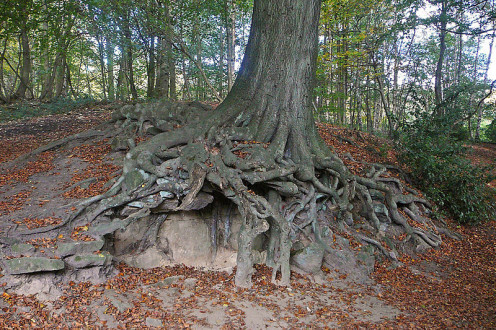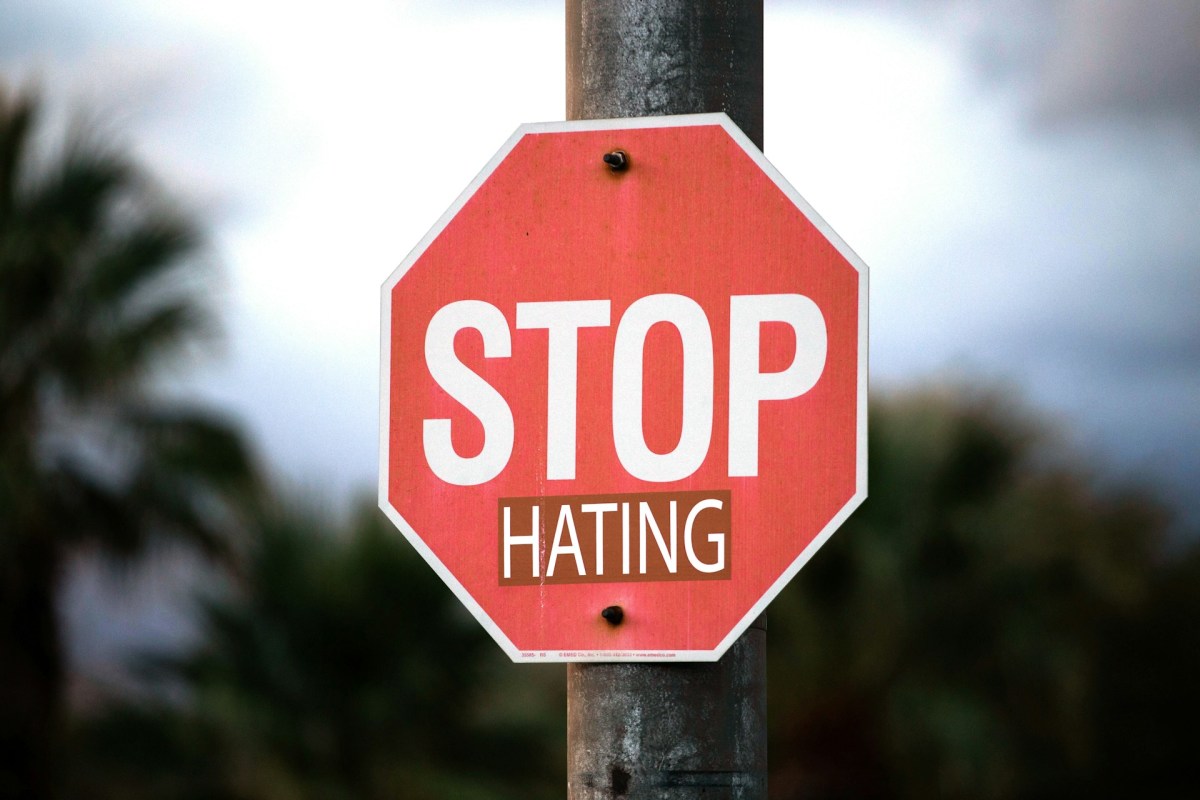Moving Past Hatred

By Michelle Liew Tsui-Lin
All-Rights Reserved
“Hate, it has caused a lot of problems in the world, but has not solved one yet.”
The celebrated feminist, humanitarian, entertainer and poetess summed up the call against hatred perfectly, in a single sentence.
This grotesque, taunting root has certainly never solved any problems, but only helped to grow more of them in dubious, ugly glory.
The horrifying fact of the matter is that most of us revel in this malignant growth. None of us can escape feelings of hate that plague us from time to time. After all, we do the best we can, but being saintly is a rather elusive, altruistic goal.
Yet, deal with these feelings, we must. In seemingly trite ways, the roots of hatred take firm hold. They can choke you mentally, emotionally and even physically if you are not wary of them.
The roots of hatred:
1. Unfairness
2. Trauma
3. Lack of self-confidence
4. The influence of peers
5. The History of One's Ancestors
A. The Roots of Hate
Before we start pulling these nasty weeds out, we must first acknowledge how they form. We all know why we hate, but seldom gather our thoughts.
Hatred stems from unfairness. The seed begins to grow in subtle ways. In an example that is relatable to all of us, perhaps parents favor one child over another. A boss gives accolades to one employee over others who have worked as hard, if not harder, than he has. The perceived unfairness that results is a resentful sapling that sprouts into a full grown plant over time.
Trauma or unpleasant past history also causes this seed to grow. Like soiled, untreated water, it causes hatred to grow in a distended, irrational fashion. The trauma of sexual assault and abuse in any form makes it grow like a sick weed.
In a way, we are responsible for nurturing our own hatred. Our lack of self-confidence acts as a nutrient that sustains this dreaded weed. It manifests itself in the form of self-hate. We hate ourselves for not being able to handle matters with the same competence as others. We dislike ourselves for the way we look or feel.
The influence of peers, too, is a mineral that nurtures this weed. Family or friends seed thoughts of hate for certain people or concepts. These thoughts grow and are difficult to block.
They transcend borders and history, flowing from one generation to the next. Think of all religious conflicts and atrocities of war; these are tangled roots, formed over time, that simply cannot be erased.

1. Hate causes anger and depression.
2. It does not help in moving forward
3. It causes irreparable damage.
4. It burns bridges.
5. It paralyzes a person morally.
B. Why we must not hate: damaging roots
Like draining weeds, these roots damage if not pulled out. The roots of hate cause self-destructive anger and depression.
They certainly do not help us to move forward in any way. While you may continue stewing in hatred of someone who is toxic, that person probably does not realize this or even revels in his own negative behavior.
Strong roots of hatred overwhelm the relationship bridges we have built over many years. They can cause irreparable damage.
The roots choke and paralyse a person morally. It becomes hard to tell right from wrong, because you keep justifying the destructive actions you may take to vindicate yourself.

Removing the hatred of others
1. Identify the object of the hatred.
2. Resolve conflicts whenever possible.
3. Work towards forgiveness.
4. Actively replace hateful thoughts.
5. Take positive action.
6. Do not blame yourself.
C. How to move past hatred: Pulling Out The Roots
Moving out of the choke hold of these roots is easier said than done, and takes much conscious effort.
a. The hatred of others
It takes knowing why they grow in the first place. At times, we are not even aware of how hatred starts. Identifying the source of the root shows us how to begin pulling it out.
To start wrestling with these roots, resolve conflicts wherever possible. Take positive action. It does not mean avoiding necessary agreements; it merely means approaching them rationally and reasonably.
Then, dig a little deeper and work towards forgiveness. Lack of forgiveness is probably the hardest part of the root to pull out as it is extremely tenacious. It does not help that it sometimes has validity. But remember that we forgive more for ourselves to move on than for the benefit of others.
To gather strength to tug at these strong roots, actively replace hateful thoughts with humour or thoughts of anything likeable. Positive motivation always helps.
Recognize, too, that hatred of others is not a blameworthy feeling. Know that the feelings are negative and keep them in check, but realise that blaming ourselves for them only grows another, sister root of self-hatred.
Overcoming Hatred
Removing self-hatred
1. Take it easy on yourself
2. Avoid Self-Criticism.
3. Reach out for support.
4. Improve your self-image.
b. Self-Hatred
Can we imagine hating ourselves for our hatred? Self-hatred, for any reason, is another choking root that causes a further, dreaded tangle that is hard to release yourself from.
Go easy on yourself. Realize that hating yourself only destroys your self-esteem, causes a nervous breakdown and does not help you or anyone else.
To weed out the sister weed, avoid self-deprecating language. Providence did not create any unworthy human beings, so it is important to never feel that way.
Reach from beyond the root for support. Friends, family or support groups are always on hand to help.
Yank the root out totally by improving your self-image. Acknowledge your own beauty; it is unique and no one else possesses it.

What is the greatest cause of your hatred?
D. Poem: Red Roots
Roots
Throbbing, red
Sprout
With water
Black and tarried
Choke
Restrain
Overwhelm
Our bridges
With hell-bent destruction
Weed Out When
These Malignant Growths
Are In Clear Sight
With rugged, diligent hands
Of truth
And Patience.
E. Conclusion
We can begin weeding these unsightly roots out today.
Other hubs by Michelle Liew
- The calm within the storm,a poem of hope
Sometimes our journey through life may be akin to surviving a tornado; but within the tornado is an eye of calm to find. - Viva La Vida: The Music and Chords of Life
This is a poem celebrating music's ability to express our every emotion, quell our fears, and most of all, give life. - The reasons why we should write poetry:an acrostic p...
On the benefits of writing poetry, some wonderful poets and an acrostic poem for National Poetry Month - Savoring the moment
Savoring important moments. - Hands up for poetry
Let's celebrate National Poetry Month.








